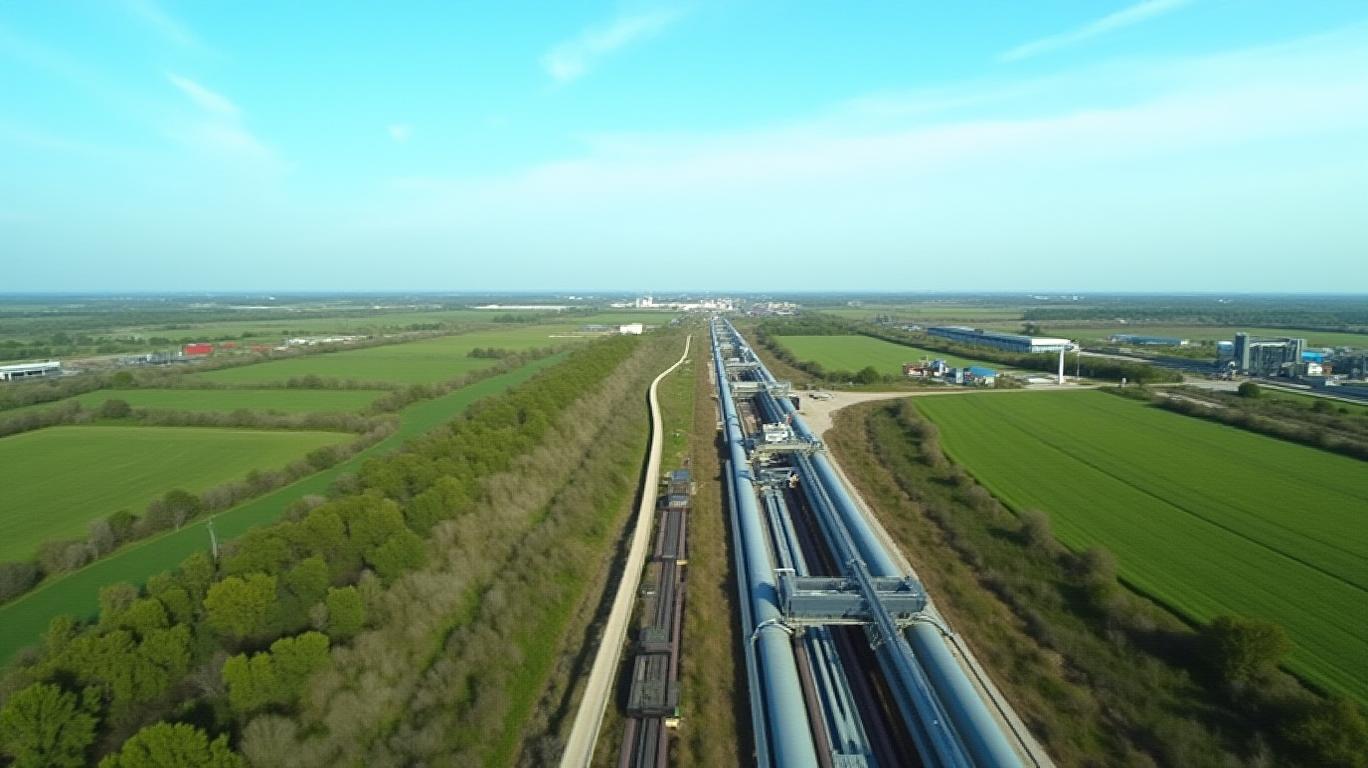Hess Midstream's Missed Earnings: A Temporary Hurdle or a Cause for Concern?
Hess Midstream Partners (HMD) reported third-quarter results that underscored a growing tension in the energy sector: strong revenue performance paired with earnings shortfalls. While the company’s $382 million in revenue matched analyst expectations, its GAAP EPS of $0.65 fell short of the $0.69 consensus estimate by $0.04. This miss raises questions about the sustainability of midstream companies’ margins amid macroeconomic headwinds and shifting energy demand dynamics.
The earnings gap appears to stem from operational and financial pressures. Hess Midstream’s partnership with Hess Corporation has historically provided steady throughput volumes, but rising maintenance costs and lower utilization rates in its pipeline and terminal assets may have dented profitability. Meanwhile, the broader energy sector faces challenges: reveal significant volatility, averaging $78 per barrel in Q3 2023 compared to $86 in the same period last year. Weaker oil prices can reduce midstream companies’ cash flows, as lower commodity prices often correlate with reduced drilling activity and, consequently, less transported crude.

Despite the EPS miss, Hess Midstream’s revenue stability offers a glimmer of resilience. The $382 million figure reflects a 3% year-over-year increase, driven by strong performance in its crude oil and refined products segments. This growth aligns with Hess Corporation’s ongoing drilling activity in the Bakken Shale, which supplies much of Hess Midstream’s throughput. However, the partnership’s structure—where
collects fees based on volumes—means its fortunes remain tied to its parent’s production decisions.Investors should also consider Hess Midstream’s financial flexibility. The company’s has remained below 3.5x, a manageable level for the sector. This allows Hess Midstream to pursue growth opportunities, such as expanding its terminal capacity in the Mid-Continent region. Yet, the company’s distribution coverage ratio—calculated as distributable cash flow divided by distributions—dropped to 1.15x in Q3, near the minimum threshold of 1.10x required to sustain its dividend. A sustained decline could force Hess Midstream to cut distributions, a move that would likely pressure its stock price.
The midstream sector as a whole is under scrutiny. Peers like Enbridge (ENB) and Enterprise Products Partners (EPD) have also faced margin pressures, with Enbridge’s Q3 EBITDA down 5% year-over-year. However, Hess Midstream’s smaller scale and narrower geographic focus make it less insulated against regional disruptions. For example, the ongoing labor disputes in the Permian Basin and Hurricane Lee’s impact on Gulf Coast operations in late September 2023 could further strain its infrastructure.
Looking ahead, Hess Midstream’s prospects hinge on two factors: Hess Corporation’s production growth and the stability of oil prices. If Hess Corporation maintains its current drilling pace, Hess Midstream’s throughput could remain robust. Additionally, a rebound in WTI prices toward $85–$90 per barrel would likely improve midstream margins. However, if oil prices linger below $80 per barrel, as some analysts predict, Hess Midstream may struggle to regain its earnings momentum.
The stock’s year-to-date return of -12% versus the Alerian MLP Index’s -8% suggests investors are already pricing in these risks. While the company’s distribution is secure for now, its current yield of 7.2%—well above the sector average—may attract income-seeking investors who are willing to overlook near-term volatility.
In conclusion, Hess Midstream’s Q3 miss is a symptom of broader industry challenges rather than a sign of terminal decline. With manageable debt, a solid revenue base, and strategic investments in key infrastructure, the partnership is positioned to recover if commodity prices stabilize. However, investors must weigh these positives against the risks of margin compression and the parent company’s production trajectory. For now, Hess Midstream remains a speculative play on midstream resilience, best suited for those with a long-term horizon and tolerance for energy-sector volatility.

Comments
No comments yet